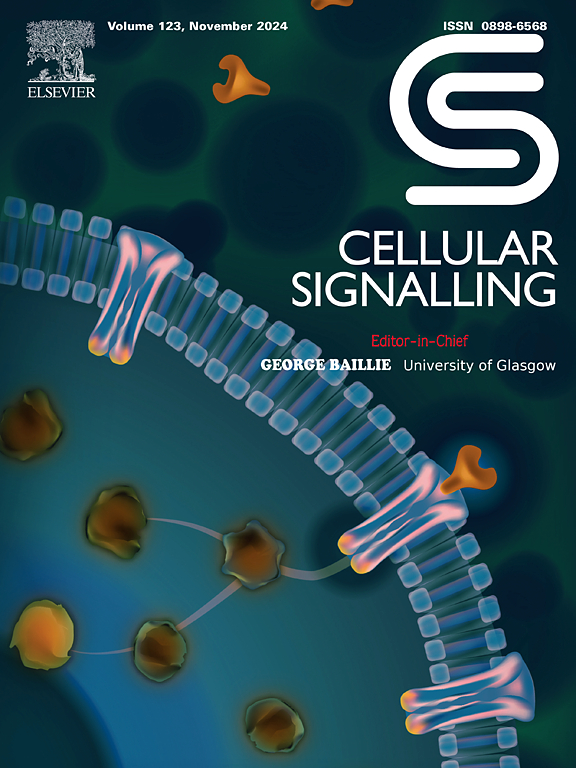次氯酸抑制血小板与cAMP信号有关。
IF 4.4
2区 生物学
Q2 CELL BIOLOGY
引用次数: 0
摘要
由中性粒细胞衍生的髓过氧化物酶产生的次氯酸(HOCl)被认为可以抑制血小板,然而,其机制尚未被描述。本研究证实HOCl暴露会改变血小板形态,抑制血小板的扩散和聚集。HOCl效应可被谷胱甘肽逆转,提示其与半胱氨酸氧化有关。基于质谱的hocl暴露血小板蛋白质组学显示37个蛋白中有氧化的半胱氨酸残基,包括腺苷酸环化酶6和Rap1B。腺苷酸环化酶参与内皮源性前列环素触发的抑制性cAMP通路,Rap1是整合素αIIbβ3活化和血小板聚集所需的小G蛋白。我们发现,暴露于HOCl刺激血小板和转染HEK293T细胞中cAMP的产生和cAMP依赖性蛋白激酶底物VASP的磷酸化。此外,HOCl抑制Rap1-GTP的形成。这些数据表明,HOCl至少部分通过cAMP途径和调节Rap1抑制血小板。因此,这项研究为HOCl介导的中性粒细胞和血小板之间的串扰提供了新的见解。本文章由计算机程序翻译,如有差异,请以英文原文为准。
Platelet inhibition by hypochlorous acid involves cAMP signalling
Hypochlorous acid (HOCl), made by neutrophil-derived myeloperoxidase, has been suggested to inhibit platelets, however, the mechanisms involved have not been described. Here we confirm that HOCl exposure changes platelet morphology and inhibits platelet spreading and aggregation. HOCl effects could be reversed by glutathione suggesting a role for cysteine oxidation. Mass spectrometry-based proteomics of HOCl-exposed platelets revealed oxidised cysteine residues in 37 proteins including adenylate cyclase 6 and Rap1B. Adenylate cyclase is involved in the inhibitory cAMP pathway triggered by endothelium-derived prostacyclin and Rap1 is a small G protein required for integrin αIIbβ3 activation and platelet aggregation. We show that HOCl exposure stimulates cAMP production and phosphorylation of the cAMP-dependent protein kinase substrate VASP in platelets and transfected HEK293T cells. In addition, HOCl inhibited Rap1-GTP formation. These data suggest that HOCl inhibits platelets at least in part through the cAMP pathway and by regulating Rap1. Thus, this study provides new insights into HOCl mediated crosstalk between neutrophils and platelets.
求助全文
通过发布文献求助,成功后即可免费获取论文全文。
去求助
来源期刊

Cellular signalling
生物-细胞生物学
CiteScore
8.40
自引率
0.00%
发文量
250
审稿时长
27 days
期刊介绍:
Cellular Signalling publishes original research describing fundamental and clinical findings on the mechanisms, actions and structural components of cellular signalling systems in vitro and in vivo.
Cellular Signalling aims at full length research papers defining signalling systems ranging from microorganisms to cells, tissues and higher organisms.
 求助内容:
求助内容: 应助结果提醒方式:
应助结果提醒方式:


